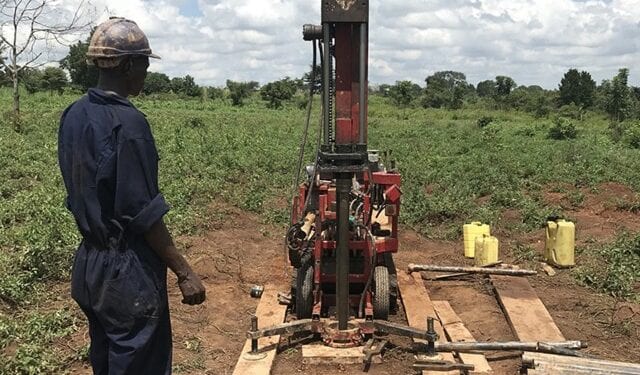Ionic Rare Earths Limited (ASX: IXR) has received more promising assays from the Phase 3 Rotary Air Blast (RAB) exploration drill programme at its 51% owned Makuutu Rare Earths Project in Uganda. The assay results reported are from 56 of the 67 RAB drill holes from the programme that was completed during April 2021.
Clay and saprolite mineralisation intersections above the cut-off grade of 200 ppm Total Rare Earth Oxide less cerium oxide (TREO-CeO2), consistent the current Mineral Resource Estimate (MRE) cutoff, have been achieved in many target areas notable intervals including:
▪ RRMRB036 12.0 metres at 937 ppm TREO from 4.0 metres
▪ RRMRB048 5.0 metres at 868 ppm TREO from 5.0 metres
▪ RRMDD031 10.0 metres at 856 ppm TREO from 5.0 metres
▪ RRMRB026 6.0 metres at 834 ppm TREO from 6.0 metres
▪ RRMRB019 10.0 metres at 832 ppm TREO from 8.0 metres
▪ RRMRB041 7.0 metres at 723 ppm TREO from 5.0 metres
▪ RRMRB028 18.0 metres at 661 ppm TREO from 5.0 metres
In a major positive development for the Project, rare earth element (REE) bearing clay mineralisation has been intersected in between previously targeted areas identified by the eU/eTh radiometric responses that indicate a laterite hardcap is present at surface. The drilling has shown that the hardcap is buried by over 1 metre of soil in some areas and the targeting eU/eTh radiometric response obscured. These results indicate new areas for follow up exploration that were previously not tested due to the lack of, or subdued, radiometric eU/eTh response.
Mineralisation in the regolith potentially derived from, and underlain by, rocks outside the mineralised basin have also been intersected in the RAB drilling. The Company will progress a selection of these samples through salt desorption testwork to confirm the proportion of ionic adsorbed rare earth content prior to confirming a plan for further drilling these targets.
Ionic Rare Earths Managing Director Mr. Tim Harrison commented:
“The Phase 3 RAB assay results confirm this significantly successful exploration campaign. They confirm the massive potential of EL00147, having identified immediate extensions to the resource estimate beyond previous radiometric targeting, and additionally, indicate potential extension of IAC mineralisation outside of the basin which was thought to confine the IAC mineralisation.”
“We will now progress initial salt desorption test work to confirm metallurgical characteristics of these new mineralisation areas identified, given that some of the mineralisation appears to be derived directly from granitic rocks, therefore it is possibly more consistent with those IAC deposits of southern China.”
“The Phase 3 drill assays clearly confirm the significance of Makuutu as a world class and expanding IAC deposit. The Project scale expected will substantially increase in the future, with these new assays inferring considerable upside at Makuutu, beyond initial estimations. Simply put, there appears to be much more REE bearing clay at Makuutu than we had initially expected.”
Drilling Programme and Targets
The Phase 3 RAB drill programme, which consisted of 67 drill holes for 1,206m, compromised reconnaissance exploration drilling only. The aim of the programme was to test for rare earth element (REE) endowment and the origin of;
• Identified exploration targets within the interpreted mineralised sedimentary basin;
• Radiometric responses outside the interpreted basin;
• Previously untested or subdued radiometric targets; and
• Areas identified as potential infrastructure sites.
The distribution of RAB holes is shown in Figure 1, illustrating intersections of clay and saprolite greater than 200ppm TREO-CeO2 from the program. The point size represents interval thickness and is coloured by TREO ppm grade. 11 remaining holes are pending assay results across the Makuutu western area.
For further information please visit: https://ionicre.com.au/












